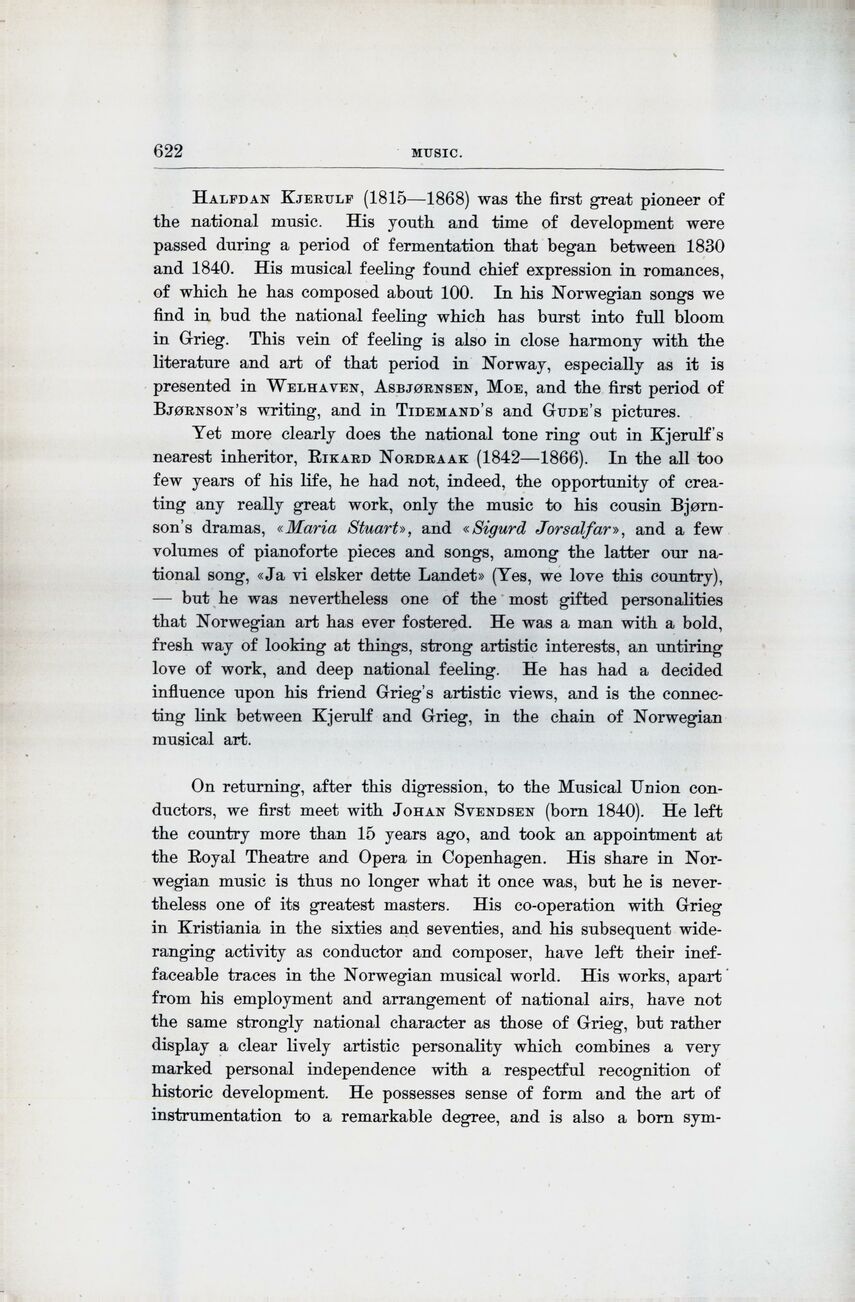
Full resolution (JPEG) - On this page / på denna sida - Music, by V. H. Siewers

<< prev. page << föreg. sida << >> nästa sida >> next page >>
Below is the raw OCR text
from the above scanned image.
Do you see an error? Proofread the page now!
Här nedan syns maskintolkade texten från faksimilbilden ovan.
Ser du något fel? Korrekturläs sidan nu!
This page has been proofread at least once.
(diff)
(history)
Denna sida har korrekturlästs minst en gång.
(skillnad)
(historik)
Halfdan Kjerulf (1815—1868) was the first great pioneer of
the national music. His youth and time of development were
passed during a period of fermentation that began between 1830
and 1840. His musical feeling found chief expression in romances,
of which he has composed about 100. In his Norwegian songs we
find in bud the national feeling which has burst into full bloom
in Grieg. This vein of feeling is also in close harmony with the
literature and art of that period in Norway, especially as it is
presented in Welhaven, Asbjørnsen, Moe, and the first period of
Bjørnson’s writing, and in Tidemand’s and Gude’s pictures.
Yet more clearly does the national tone ring out in Kjerulf’s
nearest inheritor, Rikard Nordraak (1842—1866). In the all too
few years of his life, he had not, indeed, the opportunity of
creating any really great work, only the music to his cousin
Bjørnson’s dramas, «Maria Stuart», and «Sigurd Jorsalfar», and a few
volumes of pianoforte pieces and songs, among the latter our
national song, «Ja vi elsker dette Landet» (Yes, we love this country),
— but he was nevertheless one of the most gifted personalities
that Norwegian art has ever fostered. He was a man with a bold,
fresh way of looking at things, strong artistic interests, an untiring
love of work, and deep national feeling. He has had a decided
influence upon his friend Grieg’s artistic views, and is the
connecting link between Kjerulf and Grieg, in the chain of Norwegian
musical art.
On returning, after this digression, to the Musical Union
conductors, we first meet with Johan Svendsen (born 1840). He left
the country more than 15 years ago, and took an appointment at
the Royal Theatre and Opera in Copenhagen. His share in
Norwegian music is thus no longer what it once was, but he is
nevertheless one of its greatest masters. His co-operation with Grieg
in Kristiania in the sixties and seventies, and his subsequent
wide-ranging activity as conductor and composer, have left their
ineffaceable traces in the Norwegian musical world. His works, apart
from his employment and arrangement of national airs, have not
the same strongly national character as those of Grieg, but rather
display a clear lively artistic personality which combines a very
marked personal independence with a respectful recognition of
historic development. He possesses sense of form and the art of
instrumentation to a remarkable degree, and is also a born
<< prev. page << föreg. sida << >> nästa sida >> next page >>